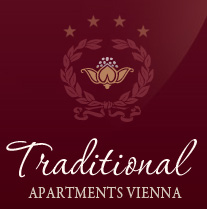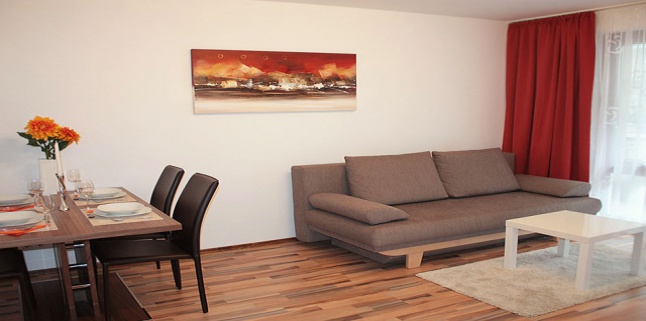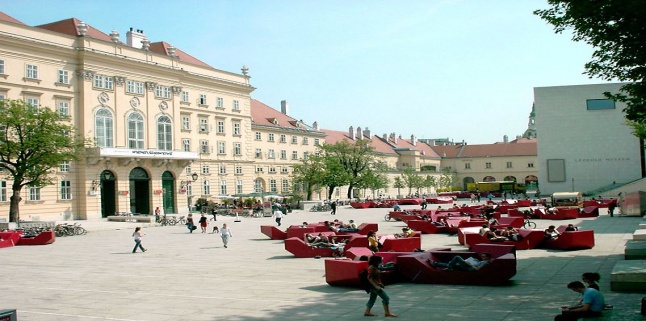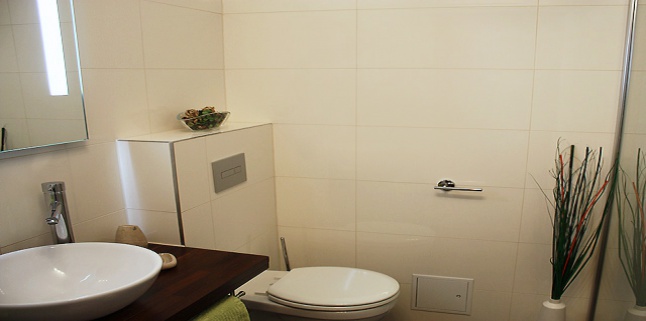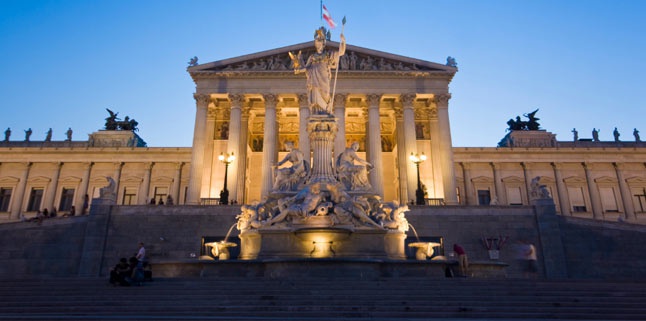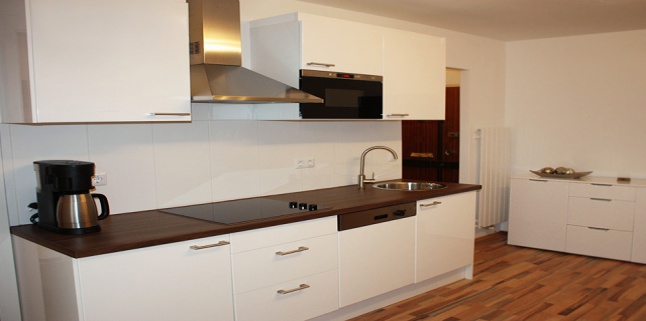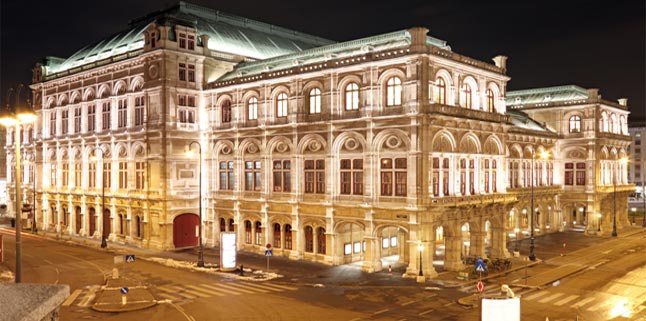ONLINE BOOKING SERVICE
NEWS
--Concerts--
VIENNA MOZART ORCHESTRA
year-round, playing concerts in
Golden Hall, State Opera, Konzerthaus
VOLKSOPER VIENNA
Viennas main stage for operetta,
opera, musicals and ballet
VIENNA STATE OPERA
one of the leading and most
famous opera houses in the world
--Events--
SPANISH RIDING SCHOOL
Lipizzaner Performance, year-round
Michaelerplatz 1, 1010 Vienna
VIENNA FILM FESTIVAL
Wiener- Eistraum and Weihnachtstraum
Location Rathausplatz, 1010 Vienna
MADAME TUSSAUDS VIENNA
Open 364 days a year
Riesenradplatz, 1020 Vienna
--Highlights--
VIENNALE V'18
Oct 25 – Nov 8
Vienna International Film Festival
AN EVENING IN SCHOENBRUNN
year-round
Schloss Schönbrunn, Orangerie
WIENER FESTWOCHEN
May 10 – June 16
#festwochen2019
--Follow Us--
MORE ABOUT VIENNA

Saint Stephen's Cathedral is the mother church of the Archdiocese of Vienna and and one of the most famous sightseeing attractions of this city. The St. Stephans Cathedral (in German: Stephansdom) is current Romanesque and Gothic form seen today, situated at the heart of Vienna, Austria at the Stephansplatz. It is a Must-Have seen location for Vienna holiday-maker. You can get there quiet easy with the underground one U1 or underground three U3. The cathedral was largely initiated by Rudolf IV, Duke of Austria and stands on the ruins of two earlier churches, the first being a parish church consecrated. As the most important religious building in Austria's capital (take a look at the Vienna City Map), the Stephansdom cathedral has borne witness to many important events in that nation's history and has, with its multi-colored tile roof, become one of the city's most recognizable symbols. After the fire of 1945, Michael Kauffmann finished in 1960 a large electric organ with 125 voices and 4 manuals, financed with public donations. In 1991, the Choir organ was built by the Austrian firm Rieger. It is a mechanical organ, with 56 voices and 4 manuals. Historical text datas are Wikipedia excerpts.

Belvedere - is a historical building complex in Vienna, Austria, consisting of two Baroque palaces the Upper and Lower Belvedere, the Orangery, and the Palace Stables. The buildings are set in a Baroque park landscape in the 3rd district of the city vienna, south-east of its centre. It houses the Belvedere museum. The grounds are set on a gentle gradient and include decorative tiered fountains and cascades, Baroque sculptures, and majestic wrought iron gates. The Baroque palace complex was built as a summer residence for Prince Eugene of Savoy.
The Belvedere was built during a period of extensive constructions in Vienna, which at the time was both the imperial capital and home to the ruling dynasty. This period of prosperity followed on from the commander-in-chief Prince Eugene of Savoy's successful conclusion of a series of wars against the Ottoman Empire. (Text excerpt, Wikipedia)

Wiener Riesenrad (German for "Viennese giant ferris wheel"), or Riesenrad is a Ferris wheel at the entrance of the Prater amusement park in Leopoldstadt, the 2nd district of Austria's capital Vienna. It is now one of Vienna's most popular tourist attractions, and symbolises the district as well as the city for many people. The Riesenrad was one of the earliest Ferris wheels, erected in 1897 to celebrate Emperor Franz Josef I's golden Jubilee. At this time it was the largest in the world with an overall height of 64.75 meters(212.4 ft).
The wheel originally had 30 gondolas, but was severely damaged in World War II. When it was rebuilt, only 15 gondolas were replaced. The spokes are steel cables, in tension, and the wheel is driven by a circumferential cable which leaves the wheel and passes through the drive mechanism under the base. A demolition permit for the Riesenrad was issued in 1916, but due to a lack of funds with which to carry out the destruction, it survived. Our apartments are only a few public transport station away from the amusement park "Wurstelprater" and the Viennese Ferris wheel. So if you have time left during your vacation to visit this sightseein attraction. You will rewarded with a incredible view.
The Riesenrad is not the only Ferris wheel in Vienna, but it is the largest. Since 1993, there is a second permanent Ferris wheel in the Prater with a diameter of 35 metres, called the Blumenrad. A further permanent Ferris wheel can be found at Bohemian Prater.

Schloss Schönbrunn (English: Schönbrunn Palace), is a former imperial 1,400-room Rococo summer residence in Vienna, Austria. One of the most important cultural monuments in the country, since the 1960s it has been one of the major tourist attractions in Vienna. The palace and gardens illustrate the tastes, interests, and aspirations of successive Habsburg monarchs.In the year 1569, Holy Roman Emperor Maximilian II purchased a large floodplain of the Wien river beneath a hill, situated between Meidling and Hietzing, where a former owner, in 1548, had erected a mansion called Katterburg. The emperor ordered the area to be fenced and put game there such as pheasants, ducks, deer and boar, in order to serve as the court's recreational hunting ground. In a small separate part of the area, "exotic" birds like turkeys and peafowl were kept. Fishponds were built, too.
The name Schönbrunn (meaning "beautiful spring"), has its roots in an artesian well from which water was consumed by the court.
During the next century, the area was used as a hunting and recreation ground. Especially Eleonora Gonzaga, who loved hunting, spent much time there and was bequeathed the area as her widow's residence after the death of her husband, Ferdinand II. From 1638 to 1643, she added a palace to the Katterburg mansion, while in 1642 came the first mention of the name "Schönbrunn" on an invoice. The origins of the Schloss Schönbrunn orangery seem to go back to Eleonora Gonzaga as well. Text excerpt from Wikipedia.

Museum of Natural History of Vienna (Naturhistorisches Museum Wien) or NHMW - a large museum located in Vienna, Austria. The collections displayed cover 8,700 square metres (94,000 sq ft), and the museum has a website providing an overview as a video virtual tour.
The Museum of Natural History in Vienna is one of the important museums of the world, and the earliest collections of artifacts were begun over 250 years ago.
As of 2006, 20 million objects are scientifically maintained. The main building of the Museum is an elaborate palace that has accommodated these constantly growing collections, since opening to the public in 1889 as the Imperial Natural History Museum. However, some of the collections had been moved from even older buildings, such as the Hofbibliothek which contained the Zoology Cabinet (German: Tierkabinett) collections.
The interaction of the building, the ornate decoration, the furniture, and precious exhibits makes the museum also a "museum of the museum" for the cultural-historical preservation.
Famous and irreplaceable exhibits, for instance the 25,000-year-old Venus of Willendorf, and a skeleton of a Diplodocus dinosaur, plus extinct animal or plant specimens from 200 million years ago such as the Steller sea-cow, are displayed along 39 halls. Contemporary presentation by means of modern exhibition technology has been possible without destruction of the historical structures in the building. Wikipedia excerp about the NHM Vienna - Museum of Natural History.

Donau- Insel (Danube Island) is a long, narrow island, in central Vienna, Austria, between the Danube river and the parallel excavated channel Neue Donau ("New Danube"). The island is 21.1 km (13.1 mi) in length, but is only 70–210 metres (230–690 ft) broad. The New Danube waterway is practically an elongated (swimming) lake, technically a diluvian bed.To most visitors, the island is known as a recreational area with bars, restaurants and nightclubs. It has sports opportunities from rollerblading, cycling and swimming to canoeing. There is one beach that, in its beginning, felt so exotic that it was soon nicknamed the "Copa Cagrana" as a humoristic allusion to Rio de Janeiro's Copacabana: Kagran is the part of the 22nd District of Vienna next to that beach. In the southern and northern parts of the island, there are extensive (and free) nude beaches.
The Donauinselfest is an internationally well-known annual open air festival, and Europe's biggest event of this kind, expected to soon hit the 3-million-visitors mark. It takes place at the end of June (Friday through Sunday) – except for 2008 (September 5th–7th), due to Austria (and Switzerland) hosting the European Football Championship. On September 23, 2008, Madonna gave her first concert in Vienna there in front of an impressive crowd of 57,000. (Text excerp Wikipedia)

Rathaus is a building in Vienna which serves as the seat both of the mayor and city council of the city of Vienna. The town hall also serves, in personal union, as Governor and Assembly (Landtag) of the State of Vienna, a state with the Austrian federal system.The Rathaus was designed by Friedrich von Schmidt in the Gothic style, and built between 1872 and 1883. On the top of the tower is the Rathausmann, one of the symbols of Vienna. Facing the Rathaus is a large park, the Rathauspark. The Rathaus also accommodates the historic 'Wiener Rathauskeller' restaurant. The traditional restaurant consists of several baroque halls, offering small traditional Viennese delicacies to grand gala buffets. Recently finished renovations (2000) include the re-opening of the neo-baroque Salon Ziehrer and the redesigned Lanner-Lehar Hall with wall and ceiling murals by German Trompe-l'œil artist Rainer Maria Latzke. More wiki infos about Viennese Rathaus...

The Austrian Parliament Building (German: Parlament or Hohes Haus, formerly the Reichsratsgebäude) in Vienna is where the two Houses of the Parliament of Austria conduct their sittings. The building is on the Ringstraße boulevard in the first district Innere Stadt, close by the Hofburg Palace and the Palace of Justice.
The main construction lasted from 1874 to 1883. The architect responsible for the building in a Greek revival style was Theophil Edvard Hansen. He designed the building holistically, each element harmonizing with the others and was therefore also responsible for the interior decoration, such as statues, paintings, furniture, chandeliers, and numerous other elements. Hansen was ennobled by Emperor Franz Joseph with the title of a Freiherr (Baron) after completion. One of the building's most famous features is the later added Athena fountain in front of the main entrance, which is a notable Viennese tourist attraction. Following heavy damage and destruction during the Second World War, most of the interior has been restored to its original splendour.
The parliament building covers over 13,500 square meters, making it one of the largest structures on the Ringstraße. It was built to house the two chambers of the Imperial Council, or Reichsrat, the legislature of the Austrian part (Cisleithania) of the Austro-Hungarian Empire. Today, the parliament building is the seat of the two houses — National Council (Nationalrat) and Federal Council (Bundesrat) — of the Austrian parliament. It contains over one hundred rooms, the most important of which are the Chambers of the National Council, the Federal Council and the former Imperial House of Representatives (Abgeordnetenhaus). The building also includes committee rooms, libraries, lobbies, dining-rooms, bars and gymnasiums. It is the site of important state ceremonies, most notably the swearing-in ceremony of the President of Austria and the state speech on National Day on each October 26. The building is very closely associated with the two Houses, as shown by the use of "Hohes Haus" as a metonym for "Parliament". Parliamentary offices overspill into nearby buildings such as the Palais Epstein. Read more about the Parliament or Hohes Haus in Wien on Wikipedia...

Hofburg Palace is a palace located in Vienna, Austria, that has housed some of the most powerful people in Austrian history, including the Habsburg dynasty, rulers of the Austro-Hungarian empire. It currently serves as the official residence of the President of Austria. It was the Habsburgs' principal winter residence, as the Schönbrunn Palace was their preferred summer residence.
The Hofburg Vienna area has been the documented seat of government since 1279 for various empires and republics. The Hofburg has been expanded over the centuries to include: various residences (with the Amalienburg), the chapel (Hofkapelle or Burgkapelle), museums (the Naturhistorisches Museum & Kunsthistorisches Museum), the Imperial Library (Hofbibliothek now the Prunksaal), the treasury (Schatzkammer), the national theatre (Burgtheater), the riding school (Hofreitschule), the horse stables (the Stallburg and Hofstallungen)and the Hofburg Congress Center.
The Hofburg faces the Heldenplatz ordered under the reign of Emperor Francis Joseph, as part of what was to become a Kaiserforum that was never completed.
Numerous architects have executed work at the Hofburg as it expanded, notably the Italian architect-engineer Filiberto Luchese (the Leopoldischiner Trakt), Lodovico Burnacini and Martino and Domenico Carlone, the Baroque architects Lukas von Hildebrandt and Joseph Emanuel Fischer von Erlach (the Reichschancelry Wing and the Winter Riding School), Johann Fischer von Erlach (the library), and the architects of the grandiose Neue Burg built between 1881 and 1913. Read more about the charming Hofburg Palace on Wikipedia...

Vienna State Opera (Wiener Staatsoper) is an opera house – and opera company – with a history dating back to the mid-19th century. It is located in the centre of Vienna, Austria. It was originally called the Vienna Court Opera (Wiener Hofoper). In 1920, with the replacement of the Habsburg Monarchy by the First Austrian Republic, it was renamed the Vienna State Opera. The members of the Vienna Philharmonic are recruited from its orchestra. The building was the first major building on the Vienna Ringstraße commissioned by the controversial Viennese "city expansion fund". Work commenced on the building in 1861 and was completed in 1869, following plans drawn up by architects August Sicard von Sicardsburg and Eduard van der Nüll, who lived together in the 6. Bezirk. It was built in the Neo-Renaissance style.
The Ministry of the Interior had commissioned a number of reports into the availability of certain building materials, with the result that stones long not seen in Vienna were used, such as Wöllersdorfer Stein, for plinths and free-standing, simply-divided buttresses, the famously hard stone from Kaisersteinbruch, whose colour was more appropriate than that of Kelheimerstein, for more lushly decorated parts. The somewhat coarser-grained Kelheimerstein (also known as Solnhof Plattenstein) was intended as the main stone to be used in the building of the opera house, but the necessary quantity was not deliverable. Breitenbrunner stone was suggested as a substitute for the Kelheimer stone, and stone from Jois was used as a cheaper alternative to the Kaiserstein. The staircases were constructed from polished Kaiserstein, while most of the rest of the interior was decorated with varieties of marble.
The decision was made to use dimension stone for the exterior of the building. Due to the monumental demand for stone, stone from Sóskút, widely used in Budapest, was also used. Three Viennese masonry companies were employed to supply enough masonry labour: Eduard Hauser (still in existence today), Anton Wasserburger and Moritz Pranter. The foundation stone was laid on May 20, 1863. Read more about the wonderful Vienna State Opera on Wikipedia...
 Public Library Vienna - located at the Urban Loritz Platz (Square) next to the U6, station Burggasse-Stadthalle. The library is a popular media center and provides with its extensive range, fun science and education. One finds easy access to information of all kinds of books. Starting from nonfiction, entertainment novels, guides for leisure, and also CDs, DVDs, Blu-ray discs. The library provides its visitors with their extensive ranges exciting and informative insights and learning experiences. The main library offers a wide range of printed and digitized literature. In addition, these areas are regularly events. These make a the library place the issue and enrich the mostly traditional media offer. The main library is located in the 7th District (1070, construction) on the "Gürtel". Directly between the two carriageways. It was designed by architect Ernst Mayr and similar in shape of a ship.
Public Library Vienna - located at the Urban Loritz Platz (Square) next to the U6, station Burggasse-Stadthalle. The library is a popular media center and provides with its extensive range, fun science and education. One finds easy access to information of all kinds of books. Starting from nonfiction, entertainment novels, guides for leisure, and also CDs, DVDs, Blu-ray discs. The library provides its visitors with their extensive ranges exciting and informative insights and learning experiences. The main library offers a wide range of printed and digitized literature. In addition, these areas are regularly events. These make a the library place the issue and enrich the mostly traditional media offer. The main library is located in the 7th District (1070, construction) on the "Gürtel". Directly between the two carriageways. It was designed by architect Ernst Mayr and similar in shape of a ship.On the roof of the library is the "Library Café OBEN". You can reach the coffeehouse as also the main entrance of the Public Library Vienna via the largest staircase of Vienna. In addition to the wide range of books in the library, there is also a separate children's area called "Kirango", computer workstations, and audio and video courses and a 2000m2 large roof terrace. You can reach Vienna's main library with the U6, the tram lines 6, 9, 18, 49, and the bus line 48A . The Vienna Public Library is located two minutes walk from the apartment Urban-Loritz-Platz. For more information on opening times of the bilbliothek and the the café, please use the links.
 Wiener Stadthalle is an indoor area and event locations which is used for concerts, musicals, theater- and sport-events. It has in only two of it halls (D, F) space for more than 18,000 visitors. The Wiener Stadthalle is divided into six different areas:
Wiener Stadthalle is an indoor area and event locations which is used for concerts, musicals, theater- and sport-events. It has in only two of it halls (D, F) space for more than 18,000 visitors. The Wiener Stadthalle is divided into six different areas:Halls A, B, C (ice arena), D is the main hall, which has about 16.000 seating capacity (main hall, mostly for concerts), the smaller hall E (small events) and the hall F (for intimate concerts). Lady Gaga performed here "Born This Way tour here and also, for example George Michael with the Symphonic Orchestra. The City Hall also has a public swimming pool/hall. The Wiener Stadthallen complex is in the 15th District of Vienna: Rudolf Fünfhaus. You can reach the Wiener Stadthalle with the U6 "Burggasse-Stadthalle" / Urban Loritz Platz and the U3 "Schweglerstraße" and the tram lines 6, 9, 18, 49, bus 48A. For further information and the ticket service, please visit the official website Wiener Stadthalle. Image: wikipedia / Bildagentur Zolles GNU Free Documentation License.
 Wien West Bahnhof - One of the largest railway stations in Vienna. It was elected in 2012 to the most beautiful train station in Austria and is equipped with an underground shopping center. The shopping center "BahnhofCity Wien West" are open from monday through friday from 9 am to 21 pm and saturday from 9 am to 18 pm.
Wien West Bahnhof - One of the largest railway stations in Vienna. It was elected in 2012 to the most beautiful train station in Austria and is equipped with an underground shopping center. The shopping center "BahnhofCity Wien West" are open from monday through friday from 9 am to 21 pm and saturday from 9 am to 18 pm.The grocery stores, souvenir shops, necessary travel accessories, tobacco products and flower shops are open on sundays too.. The food court in the 1st OG, is open daily until 23.00 h. The Vienna Westbahnhof is in 15th district, Rudolf Fünfhaus on the road axis "Gürtel" (Neubaugürtel) . Public transport to the Vienna West Railway Station: underground lines U3 or U6 and the tram lines 5, 6, 9, 18, 52 and 58. Image source: wikipedia / Sven Gross-Selbeck

Augarten - is a 52.2 hectare public park. The park is designed in the French Baroque style with an elaborate flower garden landscape and vast, shady avenues of chestnut, lime, ash, and maple trees. As is the case with most federal parks and gardens in Vienna, access to the Augarten is limited to daytime activities as its five gates close at sundown.
The Augarten Porzellanmanufaktur (Augarten Porcelain Manufacturer) has its headquarters in the former Garden Hall of the Augarten. The production facility remains here as well. Augarten was the premium brand of Viennese porcelain, nearly as famous as the world-renowned Goldscheider ceramics manufactory which was managed by the Goldscheider family.
There are also two places to eat in the park, the Bunkerei (partially housed in an old bunker) and those belonging to the Filmarchiv, as well as two catered establishments, one of which is in the Atelier Augarten. The Baroque park, the palace, and the remaining part of the original wall of the Augarten, dating from the early 18th century, have been listed since 2000.
Textexcerpt of Augarten, Wikipedia.

Millennium Tower - located at Handelskai 94-96 in the 20th district of Brigittenau in Vienna, is the tallest building and 3rd tallest structure in Austria. An antenna mounted on top of the tower brings the architectural height to 202 metres (663 feet) but does not count to its overall height. The tower has 51 floors, serves both commercial and residential purposes, and is the focal point of a complex known as "Millennium City".
In the Millennium Tower, around 120 companies have rented office space, including major international companies such as Xerox, most look from there after their Eastern European activities, like many other international companies in Vienna they have advantages from the good Austrian relations to eastern European Countries.
The remaining area is to 2 levels are generally available and is used for a shopping center - Millennium City, restaurants and a multiplex cinema (UCI). The Millennium Tower was built in an extremely short construction time: Thanks to efficient organization of all work steps and modern building techniques have created an average of 2 ½ floors a week and the building completed in 1999. Millennium Tower excerpt from wikipedia.
Some of our Traditional Apartments and holiday accommodations are only a few minutes from the Millenium Tower away. For eyample our Luxury Apartment Vienna - Universumstrasse is equal near to this tower. We recommend to visit this imposing building. Maybe a shopping trip for a rainy day. You will find there in the fullness of shop for sure one or the other souvenir for your loved ones.
 Karmeliter Markt is a market located at the 2nd district of Vienna. It is a part of the Karmeliterviertel in Leopoldstadt. The opening hours of the Karmelitermarkt are Monday til Friday 6-19.30 o'clock, Saturday 6-17 o'clock. You can buy there cheese, smoked meat, sausage, meat and seasonal fruits and vegetables goods, bread, kaiser rolls etc. There are also a lot of small restaurants which offer traditional viennese food. You also find there a slow-food corner with indigenous foods and dairy products. The Karmelitermarkt is one of the oldest existing markets in Vienna and it is equal near of our Entire Apartment Vienna - Stuwerstrasse. During summer you find here a variety of outdoor restaurants and bars. It is one of the top places of the city. Austrians, tourists or residents are relaxing at this market - drinking beer "weißen Spritzer" and enjoy the sunset and traditional flair of Vienna.
Karmeliter Markt is a market located at the 2nd district of Vienna. It is a part of the Karmeliterviertel in Leopoldstadt. The opening hours of the Karmelitermarkt are Monday til Friday 6-19.30 o'clock, Saturday 6-17 o'clock. You can buy there cheese, smoked meat, sausage, meat and seasonal fruits and vegetables goods, bread, kaiser rolls etc. There are also a lot of small restaurants which offer traditional viennese food. You also find there a slow-food corner with indigenous foods and dairy products. The Karmelitermarkt is one of the oldest existing markets in Vienna and it is equal near of our Entire Apartment Vienna - Stuwerstrasse. During summer you find here a variety of outdoor restaurants and bars. It is one of the top places of the city. Austrians, tourists or residents are relaxing at this market - drinking beer "weißen Spritzer" and enjoy the sunset and traditional flair of Vienna.
 Lusthaus Vienna in the viennese Prater is a historical building. In the 19th Century it was a popular meeting place for the aristocracy. At present you find there is a very traditionall restaurant and a coffee house with beautiful garden. The Lusthaus is a protected monument in Austria.
Lusthaus Vienna in the viennese Prater is a historical building. In the 19th Century it was a popular meeting place for the aristocracy. At present you find there is a very traditionall restaurant and a coffee house with beautiful garden. The Lusthaus is a protected monument in Austria.The ambiance imparts a mix between historical, classy elegance and contemporary serenity. Like an island of relaxation in the middle of the Viennese Prater, this rarity offers the perfect background for a rendezvous, a tete-a-tete, for lunch, for some hours leisurely spent or for the ordinary evening cocktail, for spontaneous meetings and a nice little “hello” among friends. Quote: lusthaus-wien.at Bildquelle: Wikipedia
 Messe Wien - The exhibition center of Reed Exhibitions is in the 2nd district (Leopoldstadt) at the Ausstellungsstrasse, next to the Prater. Congress Centre / Messe, adress: Messeplatz 1, 1020 Vienna www.messe.at
Messe Wien - The exhibition center of Reed Exhibitions is in the 2nd district (Leopoldstadt) at the Ausstellungsstrasse, next to the Prater. Congress Centre / Messe, adress: Messeplatz 1, 1020 Vienna www.messe.at

Time Travel Vienna a 5D Action Cinema. Time Travel Vienna is experience and entertaining at the same time. Or like they pronounce on their website: History, Fun and Action. Time Travel Vienna offer a unique historical experience for young and old. History trips back in time through all of Vienna's centuries. This entertaining cinema experiance will be exciting to seniors, children, natives and tourists. The cinema shows are daily 20 minutes. Opentimes from 10 am - 8 pm. Last entry is at 7 p.m. Location: In the basement of the Salvatorianerklosters in the first district. The program lasts for approximately 50 minutes. Perfect entertainment for rainy autumn days, cool days of spring, cold winter or hot summer days. Habsburgergasse 10A; 1010 Vienna. Near Graben - Petersplatz. For further information and service offers visit the website www.timetrave-vienna.at
